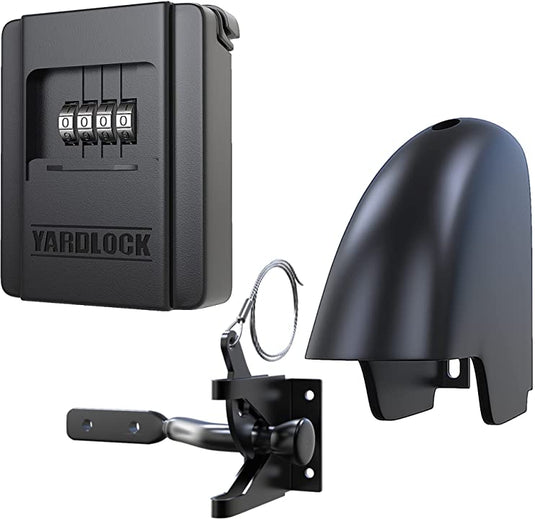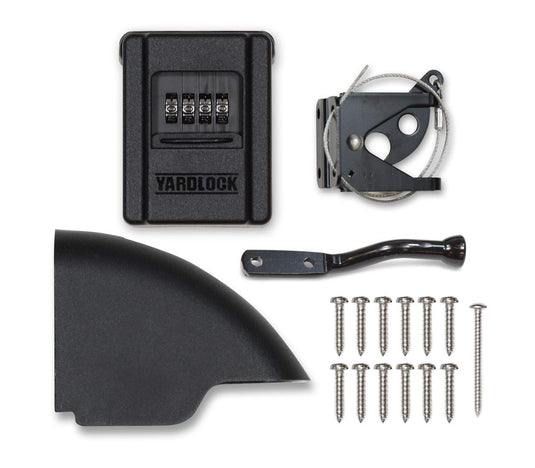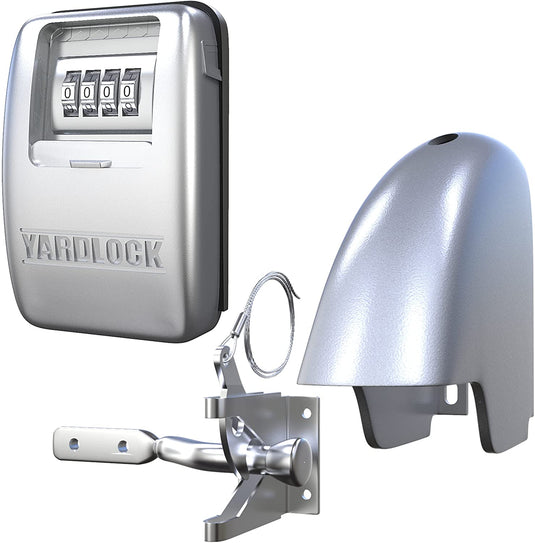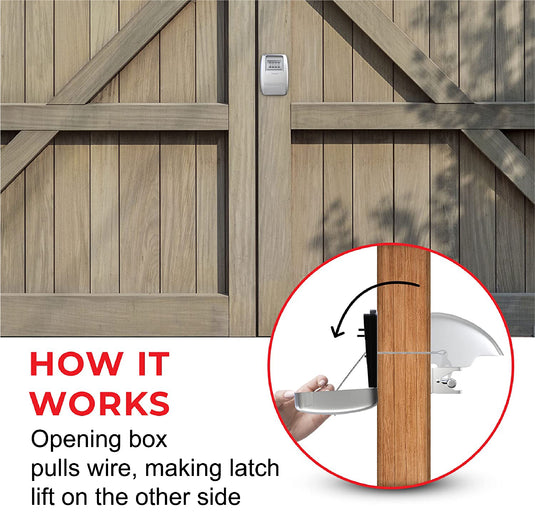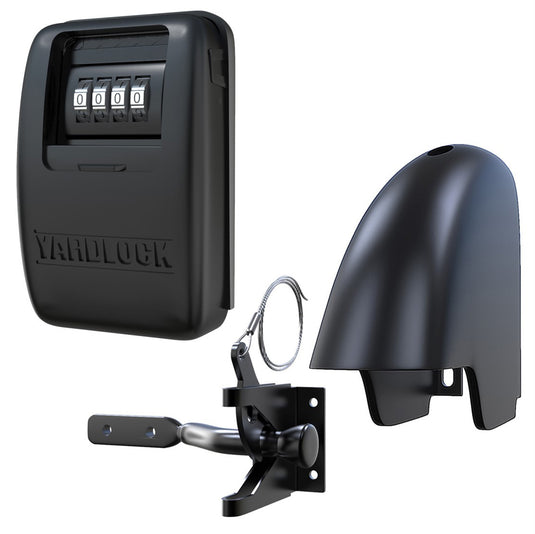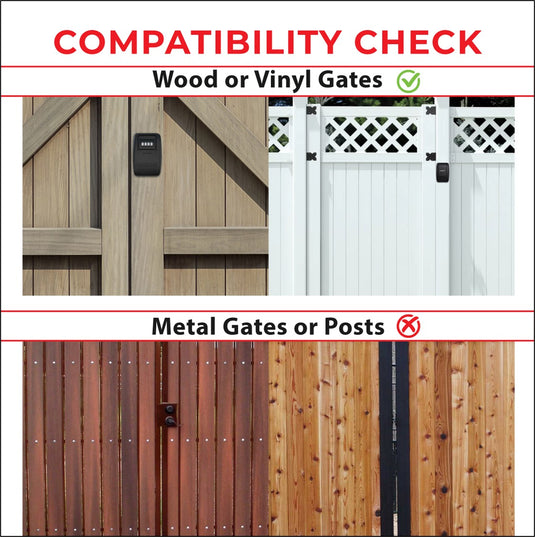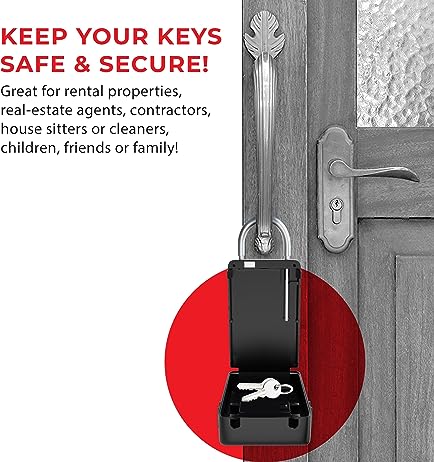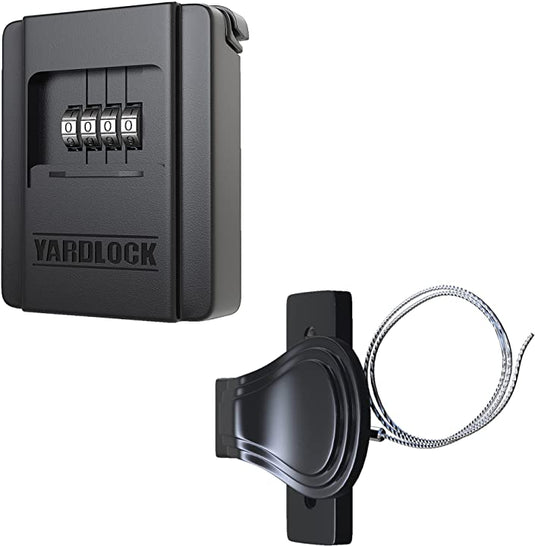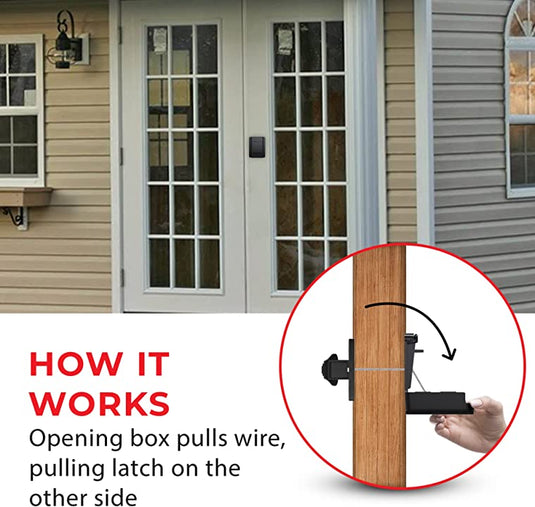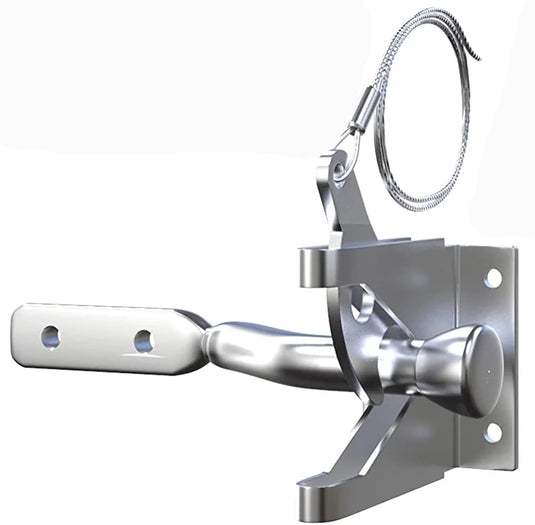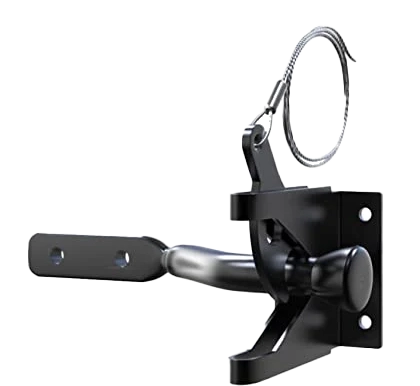Best Gate Locks for Coastal Homes: Stainless vs Zinc in Salt-Air Environments

Living by the coast has its perks—fresh air, ocean views, and relaxing breezes. But coastal homeowners also face unique challenges when it comes to outdoor hardware and security. Salt in the air, combined with high humidity and constant moisture, can quickly corrode metal, rust hinges, and damage traditional locks.
If you’ve ever struggled with a rusted gate lock that won’t turn or a corroded padlock that breaks after one season, you already know the frustration. That’s why choosing the right material—stainless steel vs zinc-coated steel—makes all the difference.
In this guide, we’ll break down:
-
Why coastal air destroys standard locks.
-
The differences between stainless steel and zinc finishes.
-
Which situations call for YARDLOCK’s XLS Stainless Steel Gate Lock.
-
Maintenance tips to keep your gate hardware strong for years.
Why Coastal Air is Tough on Gate Locks
Coastal environments are harsh on outdoor materials because of three main factors:
-
Salt Corrosion – Salt particles carried in the air land on your gate hardware. Once combined with moisture, they create a corrosive layer that eats into metal.
-
High Humidity – Constant damp air means locks rarely dry out fully. Moisture lingers and accelerates rusting.
-
Sun + Salt + Rain Cycle – The mix of UV exposure, salty mist, and sudden rains weakens finishes and coatings faster than inland climates.
The result? A lock that might last years inland could fail within months at the beach.
Why Material Matters: Stainless Steel vs Zinc
Not all gate locks are built the same. The choice between stainless steel and zinc-coated (galvanized) steel is critical when you live near salt water.
Zinc-Coated (Galvanized) Steel Locks
-
Steel coated with a layer of zinc to slow rusting.
-
Affordable and strong for mild climates.
-
Works well in inland areas with low humidity.
-
But: Salt air eats through zinc faster, exposing the steel underneath.
-
Lifespan in coastal areas: 1–3 years with regular maintenance.
Stainless Steel Locks
-
Made from an alloy containing chromium, which forms a natural protective layer against corrosion.
-
Highly resistant to salt, moisture, and rust.
-
Ideal for coastal, poolside, or humid regions.
-
More expensive, but lasts significantly longer.
-
Lifespan in coastal areas: 5–10 years or more, even with heavy exposure.
Verdict: If you live near the ocean, stainless steel is worth the investment.
Why Choose the YARDLOCK XLS for Coastal Homes
YARDLOCK’s XLS Stainless Steel Gate Lock is specifically designed for salt-air and high-humidity environments. Unlike standard models or zinc-coated hardware, the XLS resists corrosion year after year.

Key Benefits for Coastal Homeowners:
-
Stainless Steel Construction – Built to withstand constant salt spray without rusting.
-
Keyless Convenience – No keys to corrode or jam in the cold.
-
Battery-Free & Weatherproof – Unlike smart locks, it works in all conditions—rain, sun, or storms.
-
Self-Locking System – Ensures your gate automatically locks when closed, improving safety for kids and pets.
-
Universal Fit – Works with wood, vinyl, and metal gates, making it perfect for beachside fences or pool enclosures.
When to Choose the XLS Over Standard or XLB
The Standard and XLB models are excellent for many backyards, but coastal homeowners face unique conditions that make the XLS the smarter choice.
Choose the XLS Stainless Steel Lock if:
-
You live within 5–10 miles of the ocean.
-
Your property is exposed to regular salty winds.
-
You have a pool fence near the coast (double moisture risk).
-
You want a lock that requires minimal maintenance.
-
You’ve had previous locks rust out quickly.
Real-World Example
-
Inland Suburbs (Mild Weather) – A zinc-coated lock might last 5+ years with little trouble.
-
Coastal Florida Beachfront Home – A zinc-coated lock may corrode in less than 2 years, while the XLS Stainless Steel model will hold up for many seasons without failing.
Maintenance Tips for Coastal Gate Locks
Even with stainless steel, a little upkeep goes a long way. Follow this coastal maintenance checklist:
✅ Regular Cleaning
-
Wipe down locks with a damp cloth once a month.
-
Rinse with fresh water after storms to remove salt deposits.
✅ Use the Right Lubricant
-
Apply silicone spray or graphite lubricant every 2–3 months.
-
Avoid oil-based products—they attract sand and salt.
✅ Inspect for Wear
-
Check screws, brackets, and gate alignment twice a year.
-
Tighten or adjust to keep the lock working smoothly.
✅ Prevent Rust Spread
-
If you spot rust on nearby hinges or hardware, treat it quickly before it spreads.
Stainless vs Zinc: Cost vs Longevity
It’s tempting to save money with a zinc-coated lock, but let’s look at cost over time.
-
Zinc-Coated Lock: $40–$50, may last 2 years in coastal air → replacement every couple of seasons.
-
Stainless Steel XLS: $80–$100, lasts 5–10 years → long-term savings.
Over a decade, the stainless option is cheaper because you avoid multiple replacements and the hassle of failed locks.
Final Thoughts
Coastal living shouldn’t mean replacing your gate lock every season. If you want a lock that stands up to salt air, humidity, and storms, stainless steel is the clear winner.
The YARDLOCK XLS Stainless Steel Gate Lock is built for these exact conditions—giving you reliability, convenience, and security without the headaches of rust or corrosion.
When it comes to protecting your home by the ocean, don’t settle for zinc-coated locks that fail in two years. Invest in stainless steel, and enjoy peace of mind for seasons to come.

